Saint John Baptist de La Salle
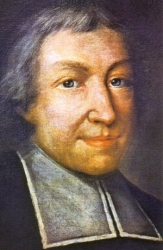
Also known as
Father of Modern Education
Profile
Studied for the priesthood in Paris, France, but quit to care for his brothers and sisters upon the death of his parents. When his siblings were grown, John returned to seminary. Canon of Rheims, France in 1667. Ordained in 1678. Doctor of theology in 1680.
Spiritual director of the Sisters of the Holy Infant who were devoted to teaching poor girls. Founded the Brothers of the Christian Schools (Christian Brothers or La Salle Brothers) in 1681, established and supported academic education for all boys. He liquidated his personal fortune, and his Brothers expected him to use it to further his education goals, but he surprised them by saying they would have to depend on Providence. The money (about $400,000) was given away to the poor in the form of bread during the great famine of 1683-1684. Saint John kept enough to endow a salary for himself similar to that which the Brothers received so he wouldn't be a burden on them.
He instituted the process of dividing students into grades; established the first teacher's school, started high schools and trade schools, and was proclaimed the patron of all teachers of all youth by Pope Pius XII in 1950.
Born
30 April 1651 at Rheims, France
Died
• 7 April 1719 at Saint-Yon, Rouen, France of natural causes
• buried in Rouen
• re-interred Lembecq-lez-Hal, Belgium in 1906
• re-interred in the chapel at the Christian Brothers Curia in Rome, Italy on 25 January 1937
Canonized
24 May 1900 by Pope Leo XIII
Patronage
• school principals
• teachers, educators (proclaimed on 15 May 1950 by Pope Pius XII)
• Brothers of the Christian Schools
Video
YouTube PlayList
Readings
Be driven by the love of God because Jesus Christ died for all, that those who live may live not for themselves but for him, who died and rose for them. Above all, let your charity and zeal show how you love the Church. Your work is for the Church, which is the body of Christ. - from a meditation by John Baptist de La Salle
https://catholicsaints.info/saint-john-baptist-de-la-salle/
Blessed Mary Assunta
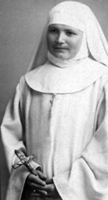
Also known as
• Assunta Maria Liberta
• Maria Assunta Pallotta
Profile
Daughter of Luigi Pallotta and Eufrasia Casali. Baptized on 21 August 1878. She grew up in Castello di Croce, Marches of Ancona, Italy. Confirmed on 7 July 1880. In 1884 she briefly attended school, learning to read and write, but she received no further formal education. On 2 March 1897 she suddenly received an understanding of her call to religious life. Made her first vows with the Franciscan Missionaries of Mary in Rome, Italy on 5 May 1898. Moved to Florence, Italy on 3 January 1902. On 1 January 1904 she put in a request to go to China to work at a leper colony; her request was approved and she left Naples, Italy for China on 19 March 1904, arriving in Tong-Eul-Keou on 18 June 1904. She served several months as a cook in the orphanage there. In early April 1905 a wave of deadly typhus ran through the house. When one of her sisters appeared about to die, Sister Mary Assunta asked that she be taken instead; her prayer was granted.
Born
20 August 1878 as Assunta Maria Liberta
Died
• 7 April 1905 at Tong-Eul-Keou, China of typhus
• upon her death, a mysterious perfume filled the house for three days
• body found intact on 23 April 1913, but the burial robes were disintegrating
• thirty men carried the coffin 28 miles to its current resting place at Tai Yan-Fou, China
Beatified
7 November 1954 by Pope Pius XII at Saint Peter's Basilica, Rome, Italy
https://catholicsaints.info/blessed-mary-assunta/
Blessed Herman Joseph
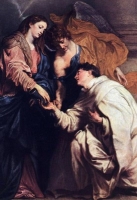
Also known as
Hermann Joseph
Additional Memorials
• 24 May (translation of relics)
• 21 May (diocese of Cologne, Germany
Profile
Son of Saint Hildegund. Had a great devotion to Mary from an early age, and as a child would spend his free time in prayer at the nearby church of Saint Mary. Mystic whose otherwordly experiences made him famous throughout the areas of modern Germany. Premonstratensian monk at Steinfeld, Germany; cared for the refectory and sacristy in the house, and could build or repair clocks. Priest. Mystical writer of prayers, hymns, and bible studies; his visions and ecstacies continued throughout his life. Spiritual director of a group of Cistercian nuns at Hoven, Germany.
Born
c.1150 at Cologne, Germany
Died
• 7 April 1241 in Hoven, Germany of natural causes
• buried at the Cistercian convent at Hoven
• relics transferred to a marble tomb at Steinfeld, Germany
• some relics in Cologne, Germany
• some relics in Antwerp, Belgium
Beatified
1958 by Pope Pius XII (cultus confirmed)
Representation
monk or boy offering an apple to a statue of the Virgin Mary and Infant Jesus; legend says that he did that one day, and the Christ Child took it
Video
YouTube PlayList
https://catholicsaints.info/blessed-herman-joseph/
Blessed Ursuline of Parma

Also known as
Orsolina, Veneri, Venus
Profile
Daughter of Peter and Veneri Bertolina. At age 11 she was healed from a serious illness through the intercession of Saint Peter Martyr. At age 15, after having received a vision, she made a pilgrimage to Avignon, France to plead with anti-Pope Clement VII (Robert of Geneva) to resign in order to end the Western schism; when he refused, she travelled to Rome, Italy to ask Pope Boniface IX to resign for the same reason; when he refused, she returned to Avignon and made the same plea to Clement VI again. Benedictine Oblate nun, noted by her superiors for her deep spirituality and devotion to the contemplative life. Pilgrim to the Holy Lands in 1396. She stopped off in Venice, Italy on the way home and made such an impression that a monastery there was later dedicated to her, and civic leaders promoted her canonization.
Born
1375 in Parma, Italy
Died
• 7 April 1410 in Verona, Italy
• interred in the church of San Quentin in Parma, Italy
https://catholicsaints.info/blessed-ursuline-of-parma/
Saint Henry Walpole
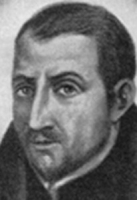
Additional Memorials
• 25 October as one of the Forty Martyrs of England and Wales
• 29 October as one of the Martyrs of Douai
Profile
Educated at Norwich, Cambridge and Gray's Inn, London, England. Adult convert to Catholicism. Studied for the priesthood at Rheims, France in 1582, and English College, Rome, Italy in 1583. Joined the Jesuits in 1584. Ordained on 15 December 1588 at Paris, France. Chaplain to the English soldiers stationed in Brussels, Belgium. Vice-governor of the College of Saint Alban at Valladolid, Spain in early 1593. Returned to England on 4 December 1593 to minister to covert Catholics around York. He was arrested the next day for the crime of priesthood, serving time in York and the Tower of London, and being repeatedly tortured before his martyrdom. One of the Forty Martyrs of England and Wales.
Born
1558 at Docking, Norfolk, England
Died
hanged, drawn, and quartered on 7 April 1595 at York, England
Canonized
25 October 1970 by Pope Paul VI
https://catholicsaints.info/saint-henry-walpole/
Blessed Ralph Ashley
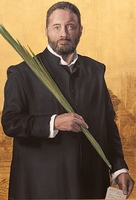
Also known as
Ralph Sherington
Profile
Worked as a cook at Douay College. Entered the English College at Valladolid on 28 April 1590 where he became a Jesuit lay brother. Ill health forced him to leave college and return to England. Along the way he was captured by Dutch heretics; he stood up to them and explained their errors. Finally landed in England on 9 March 1598.
Servant and assistant to Blessed Edward Oldcorne. Arrested on 23 January 1606 at Hindlip House, near Worcester, England in connection with the Gunpowder Plot, and for the crime of helping a priest. Transferred to the Tower of London on 3 February 1606 along with Father Garnet and Saint Nicholas Owen. Tortured for information on other Catholics and for the hiding places of priests. When they could get no information from him, he was transferred to Worcester, and condemned for his faith. Martyr.
Died
hanged, drawn, and quartered on 7 April 1607 in Worcester, Worcestershire, England
Beatified
15 December 1929 by Pope Pius XI
https://catholicsaints.info/blessed-ralph-ashley/
Blessed Edward Oldcorne
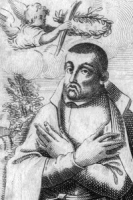
Profile
Jesuit priest, ordained in Rome, Italy, and received into the Society in 1587. Worked in the English mission in Worcestershire for 16 years. Father Edward developed throat cancer, but kept preaching through the pain. He made a pilgrimage to the shrine of Saint Winifred of Wales in Flintshire to seek a cure; his cancer healed, and he returned strong and healthy to his vocation.
Edward fell victim to the revenge following the Gunpowder Plot, a foolish conspiracy hatched by a small group of frustrated Catholic Englishmen to blow up the king and parliament. All it did was provide an excuse for renewed persecution of Catholics, especially Jesuits. Edward was arrested, falsely accused, and tortured on the rack for five days for information about the Plot. Martyred with Blessed Ralph Ashley.
Born
1561 at York, North Yorkshire, England
Died
hanged, drawn, and quartered on 7 April 1607 at Worcester, Worcestershire, England
Beatified
15 December 1929 by Pope Pius XI
https://catholicsaints.info/blessed-edward-oldcorne/
Saint Albert of Tournai
Also known as
Aibert, Aybert
Profile
A pious youth, Albert received a good education in the faith from his parents, and preferred to spend his time alone and in prayer. One day he heard a travelling musician sing a hymn about the holy hermit Theobald of Provins, and was immediately taken with the idea of a life of prayer and solitude. Spiritual student of a Father John at the Saint-Crespina Monastery in the diocese of Cambrai (in modern France) where he lived an extremely ascetic life. Benedictine monk at Saint-Crespina where he worked as cellar master for 23 years before retreating again to the life of a hermit. His reputation for holiness spread, and he attacted so many would-be students that Bishop Burchard of Cambrai ordained him and built a chapel in his cell so that Albert could hear confessions and celebrate Mass. Known for his devotion to the Eucharist and for endlessly praying the Rosary.
Born
c.1060 in Espain (near Tournai), Flanders, Belgium
Died
https://catholicsaints.info/saint-albert-of-tournai/
Saint George the Younger
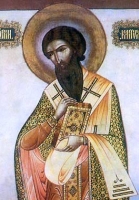
Also known as
George of Militene
Profile
Born wealthy, he used his fortune help the sick and poor until it was gone, then entered a monastery. Bishop of Mitylene, Greece; known as the Younger because there had been two previous bishops in Mitylene named George. Noted for his humility and fasting, for his gifts of healing, and his work as an exorcist. Stood against emperor Leo the Armenian and the iconoclasts. For his courage and defense of the icons he was exiled to Chersonese (near modern Sevastopol, Ukraine) for the rest of his life.
Born
c.776 at Mitylene, island of Lesbos, Greece
Died
• 816 in Chersonese (near modern Sevastopol, Ukraine) of natural causes while in exile
• his relics were returned to Mitylene, and his tomb became a scene of miraculous healings
https://catholicsaints.info/saint-george-the-younger/
Saint Hegesippus of Jerusalem
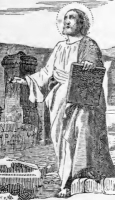
Profile
Born Jewish, he became an adult convert to Christianity. Hegesippus lived twenty years in Rome, Italy where he researched the early Church, but in later years he retired to Jerusalem. He was the first to trace and record the succession of the bishops of Rome from Saint Peter to his own day, and is considered the father of ecclesiastical history. Little of his writings survive, but he was highly recommended by other early writers including Eusebius and Saint Jerome. Compiled a catalogue of heresies during the first century of Christianity.
Born
in Jerusalem
Died
c.180 in Jerusalem of natural causes
https://catholicsaints.info/saint-hegesippus-of-jerusalem/
Blessed Alexander Rawlins
Profile
Jailed twice in England for being such a fervent and out-spoken Catholic. Seminarian in Rheims, France in 1589. Ordained in Rheims in 1590, and then returned to England to minister to covert Catholics. Worked with Saint Henry Walpole and Saint Edmund Gennings. Imprisoned, tortured and martyred in the persecutions of Queen Elizabeth I for the crime of being a priest.
Born
Oxfordshire, England
Died
hanged, drawn and quartered on 7 April 1595 in York, North Yorkshire, England
Beatified
15 December 1929 by Pope Pius XI
https://catholicsaints.info/blessed-alexander-rawlins/
Saint Brenach of Carn-Engyle
Also known as
Brynach, Bemach, Bemacus, Bernach, Bernacus, Bryynach
Profile
Contemporary of Saint Patrick. Fifth-century missionary to Wales. Converted a large part of Wales, including Brecan, ruler of South Wales who then founded many churches throughout the region. Built a cell and church at a place called Carn-Englyi (Mountain of the Angels), overhanging Nefyn in Gwynedd in Wales.
Born
Irish
Representation
• monk or abbot with a cuckoo
• monk or abbot with the Nevern Cross
https://catholicsaints.info/saint-brenach-of-carn-engyle/
Saint Phêrô Nguyen Van Luu
Also known as
• Pietro Nguyen Van Luu
• Peter Nguyen Van Luu
Additional Memorial
24 November as one of the Martyrs of Vietnam
Profile
Priest in the apostolic vicariate of West Cochinchina (modern Vietnam). Martyred in the persecutions of emperor Tu-Duc.
Born
c.1812 in Gò Vap, Gia Ðinh, Vietnam
Died
7 April 1861 in My Tho, Tien Giang, Vietnam
Canonized
19 June 1988 by Pope John Paul II
https://catholicsaints.info/saint-phero-nguyen-van-luu/
Saint Finian of Kinnitty
Also known as
• Finian Cam
• Finan, Finnian
Profile
Spiritual student of Saint Brendan the Navigator. Founded a monastery at Kinnitty, County Offaly, Ireland.
Born
Munster, Ireland
Died
6th-century
Patronage
Kinnitty, Ireland
https://catholicsaints.info/saint-finian-of-kinnitty/
Saint Gibardus of Luxeuil
Profile
Benedictine monk. Abbot at Luxeuil Abbey during an invasion of the Huns. He led his monks in an escape attempt, but they were caught by the Huns and the whole group martyred.
Died
c.888
https://catholicsaints.info/saint-gibardus-of-luxeuil/
Blessed Cristoforo Amerio
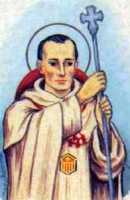
Profile
Mercedarian friar. Cardinal.
Died
1425 of natural causes
https://catholicsaints.info/blessed-cristoforo-amerio/
Saint Calliopius of Pompeiopolis
Profile
Martyred in the persecutions of Diocletian.
Died
crucified head downwards c.303 at Pompeiopolis, Cilicia, Asia Minor
https://catholicsaints.info/saint-calliopius-of-pompeiopolis/
Profile
The only one of a group of eleven Christians martyred together in Nicomedia, Asia Minor whose name has come down to us.
https://catholicsaints.info/saint-cyriacus-of-nicomedia/
Saint Peleusius of Alexandria
Also known as
Pelusio
Profile
Priest. Martyr.
Died
310 at Alexandria, Egypt
https://catholicsaints.info/saint-peleusius-of-alexandria/
Saint Goran
Also known as
Gorran, Goron, Woranus
Profile
Lived at Bodmin, Cornwall, England in the 6th century. Several Cornish churches are named for him.
https://catholicsaints.info/saint-goran/
Saint Guainerth
Also known as
Weonard
Profile
Lived in the 6th century. Patron of a chapel in Herefordshire, England.
https://catholicsaints.info/saint-guainerth/
Saint Donatus of North Africa
Profile
One of a group of 13 martyrs in North Africa.
https://catholicsaints.info/saint-donatus-of-north-africa/
Saint Epiphanius the Martyr
Profile
Bishop. One of a group of 13 martyrs in North Africa.
https://catholicsaints.info/saint-epiphanius-the-martyr/
Saint Saturninus of Verona
Profile
Fourth century bishop of Verona, Italy.
https://catholicsaints.info/saint-saturninus-of-verona/
Saint Rufinus the Martyr
Profile
One of a group of 13 martyrs in North Africa.
https://catholicsaints.info/saint-rufinus-the-martyr/
Martyrs of Pentapolis
Profile
A bishop, deacon and two lectors at Pentapolis, Lybia who for their faith were tortured, had their tongues cut out, and were left for dead. They survived, and each died years later of natural causes; however, because they were willing to die, and because there were attempts to kill them, they are considered martyrs. We know little else except their names -
Ammonius,
Irenaeus,
Serapion and
Theodore
Died
c.310 at Pentapolis, Lybia
https://catholicsaints.info/martyrs-of-pentapolis/
Martyrs of Sinope
Profile
200 Christian soldiers martyred together for their faith. We don't even have their names.
Died
Sinope, Pontus, Asia Minor (in modern Turkey)
https://catholicsaints.info/martyrs-of-sinope/
Also celebrated but no entry yet
• Aedh of Rathlin Island
• Pelagius of Alexandria
CatholicSaints.Info Portable Edition









